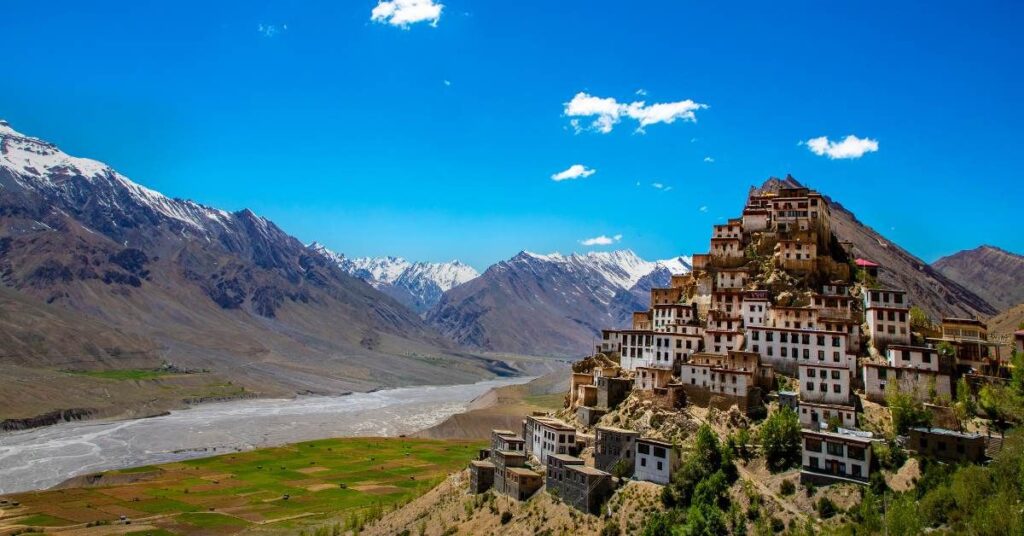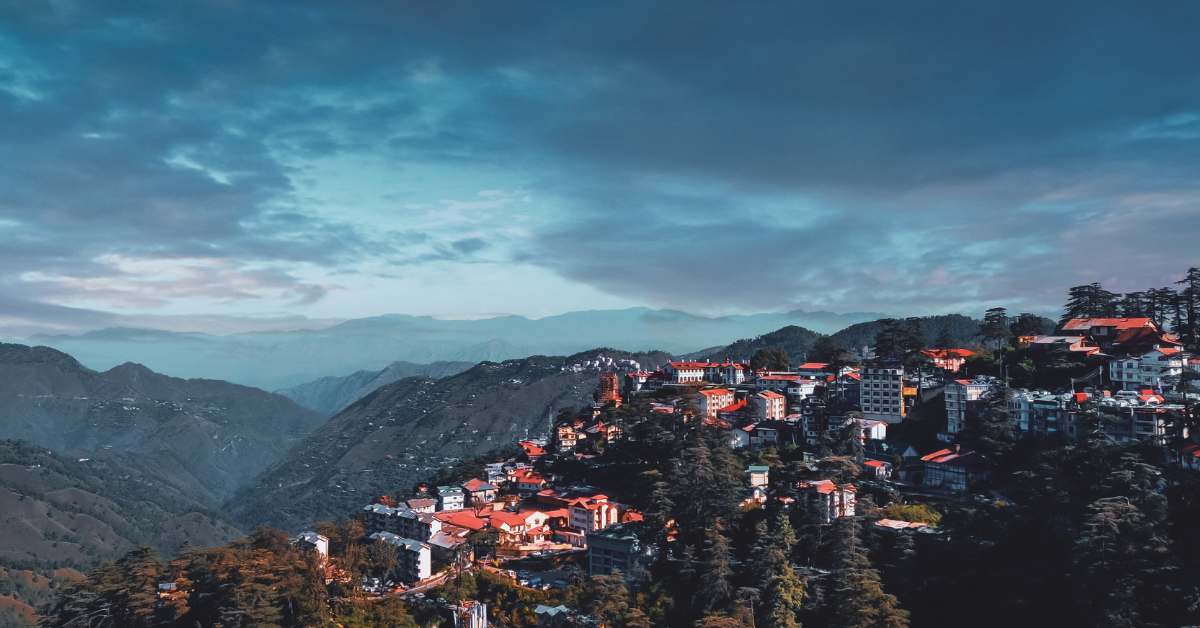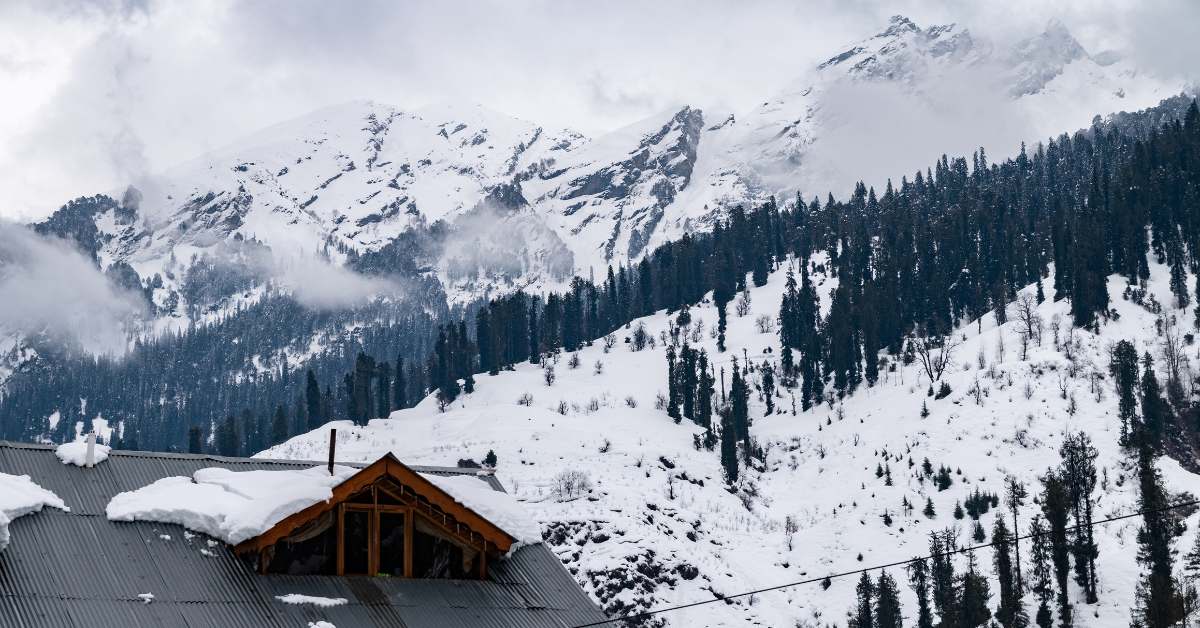Spiti Valley is a cold desert mountain valley in the northeastern part of Himachal Pradesh, India, situated in the lap of the Himalayas. The exquisite landscapes, ancient monasteries, and peculiar culture make Spiti Valley an adventurers’ haven, nature enthusiasts’ paradise, and peace seekers’ utopia. This all-inclusive guide will walk you through everything you need to know about planning your trip to Spiti Valley: how to get there, when to go, where to stay, and what to do.
Getting to Spiti Valley
By Road
From Manali:
Manali to Spiti Valley is one of the most famous and exciting routes. The journey covers around 200 km and goes through the beautiful Rohtang Pass and Kunzum Pass. From June to October, this road gives you a breathtaking view of snow-capped peaks, lush valleys, and sparkling rivers.
- Route: Manali-Rohtang Pass-Gramphu-Batal-Kunzum Pass-Losar-Kaza
- Distance: 200 km
- Travel Time: 10–12 hours (depending on road conditions)
From Shimla:
Shimla is an alternative route to reach Spiti. It is longer but open all year round, making it useful in winter when Manali shuts down due to heavy snowfall. The distance between Shimla and Kaza, the headquarters of Spiti District, amounts to approximately 450 kilometres, characterised by picturesque landscapes, apple orchards, quaint villages, and nice people.
- Route: Shimla-Narkanda-Rampur-Kalpa-Nako-Tabo-Kaza
- Distance: 450 km.
- Travel Time: 12–14 hours (usually spread over two days with an overnight stop)
By Air
The closest airport to the valley is Bhuntar Airport, located in Kullu, which is about 245 km away from Kaza. In order for you to get there, you can hire a taxi from the airport or use a bus. However, services at Bhuntar Airport are limited, so it’s better if one uses the road mode of transport.
By Rail
Kalka railway station is around 440 km from Kaza Town, which is the nearest railway station to reach Spiti Valley. One can take a taxi or bus from Kalka up to the Spiti region. The train ride to Kalka offers beautiful scenery, while going from Kalka to Spiti mixes green hillsides with rough terrain on mountain edges.
The Best Time to Visit Spiti Valley
Spiti Valley has harsh climatic conditions due to its high elevation and location in the Himalayas. The right time to visit depends on what you want to see.
Summer (May to September)
This is the peak season for tourists visiting Spiti Valley. The weather is comfortable, with temperatures ranging from 15°C to 25°C during the day. Manali and Shimla roads are operational for easy access. Valleys become green, and blue skies give breath-taking views of hills.
Monsoon (July to August)
Spiti Valley is situated in a rain shadow belt, which means it gets less precipitation. However, monsoons may lead to landslides along the Shimla-Spiti road; hence, travel may be difficult. It is important to check the weather as well as road conditions before planning any visit during this period.
Winter (October to April)
The winters are tough in Spiti, with temperatures plummeting to as low as -30 °C. Manali routes are closed due to heavy snowfall, while Shimla’s are open. During this time, those who crave adventure and would love nothing more than witnessing the snow-covered beauty of Spiti should consider going there, but they should be ready for the severe cold and the few amenities available.
Accommodation in Spiti Valley
Spiti Valley is home to various types of accommodations, including guesthouses and homestays, as well as luxury camping grounds and hotels. Below are some of them:
Kaza
- Hotel Spiti Heritage: A comfortable place with modern amenities that provides a good view of the valley.
- Sakya Abode: This hotel is a favourite among visitors who praise it for its warm, welcoming atmosphere and small rooms.
- The Grand Dewachen: It is an expensive hotel with big rooms and other modern services.
Kibber
- Norling Guest House: A lovely guest house with breath-taking views of the mountains around.
- Kibber Homestay: Live with a local family where you can witness their way of life.
Tabo
- Hotel Maitreya Regency: A nice hotel that has clean rooms and serves good meals.
- Tabo Monastery Guest House: Situated within the monastery premises, this guest house will make you feel spiritual all over again.
Dhankar
- Dhankar Monastery Guest House: No-frills lodging but amazing scenery on offer from the balcony towards the Spiti River and other peaks.
Places to Visit in Spiti Valley
Spiti Valley is the domicile of various ancient monasteries, scenic villages, and beautiful landscapes. Here are some must-visit places:
Key Monastery
Key Monastery is the biggest and one of the oldest amongst all monasteries in Spiti Valley, at an altitude of 4,166 meters. It acts as an important learning centre and consists of a large repository of old manuscripts, thangkas (Tibetan paintings), and murals. From this monastery, you can view panoramic scenes of the Spiti River and the surrounding mountains.
Kibber Village
Kibber village is one of the highest inhabited places in the world, located at an altitude of 4,270 m. The village has preserved its old houses with typical architecture; green fields surround it, as well as rare species such as the Himalayan wolf and snow leopard that found home in Kibber Wildlife Sanctuary. It also serves as a base for various treks, including the Chicham Village trek, which is very popular among tourists.
Tabo Monastery
Established in 996 AD, Tabo Monastery is one of the Himalaya’s oldest and most important religious sites. This complex harbours multiple temples, stupas, and cells accompanied by archaic mural frescoes on them. For its wonderful paintings on the wall, it’s sometimes referred to as “Ajanta of the Himalayas”.
Dhankar Monastery
Located on the top edge of a cliff overlooking the confluence point between the Spiti and Pin rivers, Dhankar Gompa offers incredible views over the valley. This more than a thousand-year-old structure has a great collection of ancient Buddhist texts and sculptures. A short walk away from Gompa lies Dhankar Lake, which is a calm, high-altitude lake surrounded by hills.
Pin Valley National Park
This protected area known for unique flora and fauna, including the endangered snow leopard, called Pin Valley National Park, provides stunning landscapes like snow-capped peaks, deep gorges, and lush meadows. It offers a range of trekking possibilities in the park itself on standard routes through it, as well as for those who adore nature.
Chandratal Lake
Chandratal Lake, otherwise referred to as the “Moon Lake,” is a high-altitude crescent-shaped lake at an elevation of 4,300 metres above sea level. It has waters that are as blue as crystal, encircled by snow-capped peaks and meadows. The stunning view of the night sky is simply breathtaking, and this makes it one of people’s favourite camping sites.
Langza Village
Langza is a beautiful village located at an elevation of 4,400 metres with fossil-bearing surroundings and views of Chau Chau Kang Nilda Peak that leave one fascinated. Langza village has an iconic Buddha statue overlooking the valley. This place also offers clear skies for stargazing, free from light pollution.
Activities in the Spiti Valley
Trekking
Spiti Valley provides a variety of trekking routes through stunning landscapes, ancient monasteries, and remote villages. Some of the renowned treks include:
- Kaza to Key Monastery and Kibber Village: an easy walk that leads you through lovely scenery and has fantastic views of Spiti Valley.
- Pin Parvati Trek: A tough journey between Kullu’s Parvati Valley and Pin Valley in Spiti. It has diverse landscapes, ranging from green valleys to snow-capped peaks.
- Parang La Trek: A high-altitude walk that connects Spiti Valley with Ladakh, passing through the picturesque Parang La Pass as well as Tso Moriri Lake.
Wildlife Spotting
Some rare and endangered creatures make Spiti Valley their home, which makes it a haven for fauna lovers. These can include, but are not limited to, snow leopards, Himalayan wolves, ibexes, and blue sheep. Some good spots for this include Kibber Wildlife Sanctuary or Pin Valley National Park.
Camping
Camping is an excellent way to experience the natural beauty of the Spiti Valley. There are various camping grounds, such as Chandratal Lake, where you can see the beautiful night sky and mountains around you.
Cultural Experiences
You can get fully involved in traditional rituals by visiting historical shrines, going for homestays, or enjoying cultural festivals. The people in Spiti Valley are known for being hospitable and having a rich cultural heritage.
Travel Tips for Spiti Valley
- Acclimatising: Spiti Valley is positioned at a high altitude, and acclimatisation is very important in order to avoid altitude sickness. Stay for one or two days at a lower altitude, like Manali or Kalpa, before you head to Spiti.
- Essentials to Carry: Take warm clothes because temperatures can fall significantly, especially at night. Further, take with you sunscreen lotions, glasses, and a cap hat so that the sun does not affect your face.
- Get Hydrated: Enough water should be taken, as this will keep you hydrated and also help in acclimatisation.
- Culture Respect: This place has a rich cultural heritage, so local cultures must be respected and observed. Be dressed in a modest manner as well as ask permission when photographing someone’s image or religious places.
- Check Road Conditions: The roads leading to Spiti Valley are demanding due to frequent landslides and roadblocks; therefore, check the conditions of the roads before beginning the route and expect delays.
- Travel Insurance: While travelling, it may be ideal to have travel insurance that covers trekking at high altitudes as well as emergency evacuation.
Conclusion
Spiti Valley is an Indian hill town, located 12,500 feet above sea level and bordered by the Great Himalayas. A unique mixture of breath-taking scenery, cultural wealth, and adventure characterises this area, which ranges from the heavenly high desert to the mountains. Regardless of whether you are longing for tranquilly, culture, or an adrenaline rush, you will find everything here in Spiti Valley. Thus, plan your visit meticulously, observe indigenous customs, and prepare yourself for fascination with this faraway valley in the Himalayas.
Hello I am Jyoti, I have been a constant travel writer for Trip Trek Tales. I love travelling and therefore, I wanted to contribute in this field. Travelling, writing and reading are the things that I love the most and this is the main reason why I started my career in writing.
At Trip Trek Tales, I am sharing the best information related to the field of travelling. All the information in the articles are after thorough research, personal experiences and knowledge. Hope you love my writings. Thank you. Have a happy travel!



